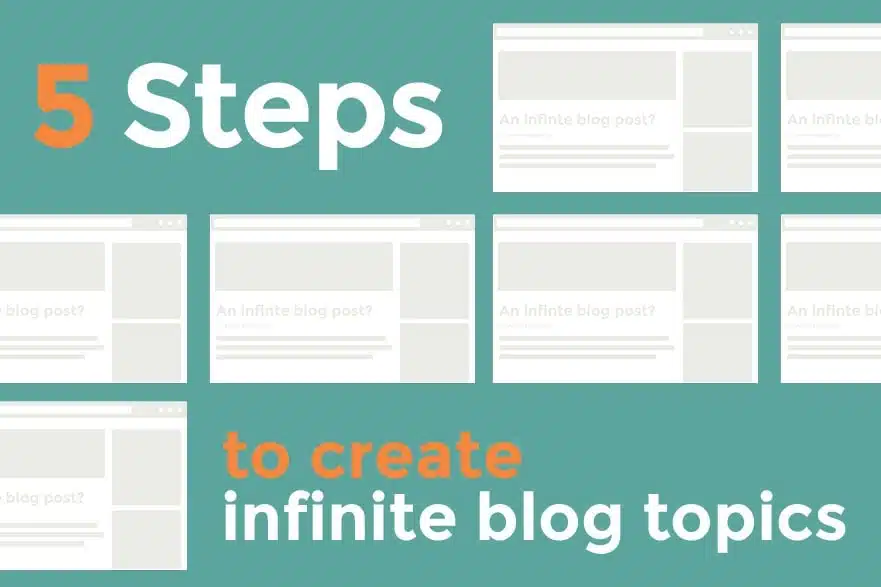


This isn’t about the excellent article you’re going to write about the topics you choose. This isn’t even about how you’re going to decide whether to do a list, make the piece clickbait, or get attention to it.
This is about how to stop struggling with what to write about, by never running out of headlines. Let’s go.
Step 1 – Pick 4-5 topics, related to sections of your website
Most businesses sell a selection of products – but it’s usually tightly categorized and easy to mark off in terms of topics. Finding themes within your products, and your website, that answer your customer’s’ needs should be an important exercise whether you’re blogging or not.
Draw some lines within your products, and the services you provide. Use these distinctions as topics to power your blog – we’ll begin sorting topics into these categories as we go.
Step 2 – Set a writing budget on a monthly or quarterly basis for each category
Part of writing an effective editorial calendar – that is, the tool that’ll tell you what to write, when – is creating a content budget for each category.
You can do this most easily by comparing your topics to how much focus you want on them, for business reasons. Does one category drive the most revenue? Do you see a weakness in your product lines that you could promote well using content? Put more weight on these.
Once you’ve figured out how much you want to be writing – one or two posts per week is a great place to start – you can figure out how many of those posts in a given time period need to be related to which topics.
Step 3 – Grab your search traffic keywords from your website’s Analytics tools
This is where things get fun, and potentially a little overwhelming, but don’t be discouraged.
Hit up your analytics tools – whether it’s Google Analytics, Omniture, New Relic, Kissmetrics, what have you. Google’s Search Console (aka Webmaster Tools) is also an excellent source for this.
Pull every keyword you can find out of your search impressions and traffic, from a period that makes sense. Most of the time, we use a 90-day period for this step, but you can even go back to the beginning of time (or the beginning of your analytics efforts at least), if you want the most complete list of terms possible.
Drop these keywords into a spreadsheet, and start cutting the chaff. Get rid of anything not associated with your business intent, obvious gibberish, branded terms that you won’t want to write for – anything that is very clearly unusable as a blog post topic or focus.
This is your master list. Keep it secret, keep it safe. Also, keep it accessible to your team, because this is where we’re going to be pulling our topics from in the future.
Step 4 – Array those keywords against your topics
More fun with spreadsheets, usually, this step involves splitting out your keywords from the master list, and lining them up with the topics you’ve decided to cover on your blog.
Some keywords will match multiple categories – this is actually a good thing, because it means you can write about the same topic from different angles, and generate even more content.
You’ll also see that some phrases won’t quite match any of the topics you’ve decided to write about. That’s fine too; just keep them aside for later, they’ll still be useful. Throw everything that doesn’t fit a pre-determined topic into a “Misc” column, or something else marked for future consideration.
Step 5 – Write blog article headlines, play mix-and-match
Don’t be afraid to involve more than one of your keywords in each topic you write about – but you should stick to a single category to address in each blog post.
You can do things like combine a couple of search terms into a coherent headline, especially where one partial search term completes another in a sentence.
Consider using search terms that are full phrases as the headline itself – if you see terms that ask a question, take the opportunity to answer it as a complete blog post.
Build out as many headlines as you can – keeping in mind how long you’ve decided your content cycle will be. If you’re doing two posts per week on a quarterly cycle, you only need 26 headlines to complete that cycle. Chances are, if you get any measure of search traffic, you’ll end up with a lot more topics to write about than that. This means you can afford to be choosey about your headlines when you decide to sit down and write – that’s a great problem to have.
The more often you do this, the better you’ll get at it.
At the end of your content cycle, you’ll be able to look back at the list you’ve created, at the headlines you’ve decided not to use or to delay, and begin fresh with a new list of the past period’s keywords.
You’ll even be overflowing with unused topics from the last topic exercise! Isn’t that way better than struggling week after week to find inspiration?
Source: Hello BLOG
Recent Articles
Write For Us
Think you’ve got a fresh perspective that will challenge our readers to become better marketers? We’re always looking for authors who can deliver quality articles and blog posts. Hundreds of your peers will read your work, and you will level up in the process.Ready to grow? Say Hello







